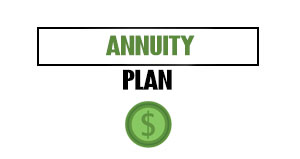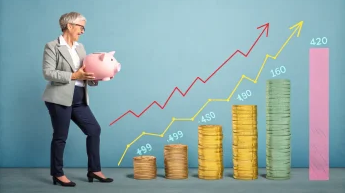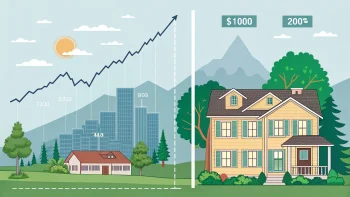The discussion on tariff policy and trade transparency has risen to prominence as experts and citizens express concerns over economic outcomes, messaging strategies, and political implications. An insightful opinion has sparked a debate on the role of tariffs in shaping trade imbalances and fostering consumer confidence. The speaker, who does not identify as an extreme supporter of any political faction, offers balanced reflections on both the historical context of tariffs and the current policy agenda. The underlying question is whether tariffs can be a fair tool to correct perceived inequities or whether their use carries risks that might worsen economic conditions.
Table of Contents
ToggleHistorical Perspective and Economic Outcomes
A review of tariff policy over time reveals complex economic effects. Historically, tariffs have been implemented during periods of uncertainty to protect domestic industries. However, past experiences indicate that imposing tariffs has often failed to stimulate economies as intended. The economic downturn during the Great Depression serves as a stark example of how tariffs reduced international trade. This historical lesson reminds policymakers and citizens of the challenges of using tariffs to influence growth.
Similar skepticism emerged in more recent years, such as during the trade policies of 2018. The analysis suggests that enforcing protective tariffs did not lead to an economic upswing. Instead, evidence points to continuing economic challenges, with tariffs not providing the intended boost. This historical observation raises questions about whether tariffs should be considered a reliable economic tool or merely a reactionary measure during trade disputes.
View this post on Instagram
Impact on Trade and International Relations
Tariffs affect various sectors in often unexpected ways. For example, tariffs on cars exported to large markets such as Europe can have significant financial repercussions in the automotive industry—the increased cost burdens suppliers and manufacturers, which eventually leads to higher prices for consumers. Similarly, agricultural exports from the United States to some countries face challenges due to imposed duties that affect market competitiveness.
The concerns voiced by the speaker indicate that tariffs might be used as a corrective tool when another nation is perceived to exploit trade imbalances. In this view, tariffs could create a more equal environment if applied with clear reasoning and transparent data. Nonetheless, the results from past policies indicate that tariffs neither consistently generate positive outcomes nor do they foster long-term economic stability.
Concerns Over Messaging and Public Confidence
A key aspect of the current debate revolves around the clarity and depth of official messaging regarding tariff decisions. Many experts emphasize that poor communication has diminished public trust and uncertainty. When the messaging appears shallow or incomplete, it can cause widespread worry among consumers and investors alike. A gap in clear communication can even lead to fears about higher inflation and a slower economy.
It is important that policymakers adopt a straightforward approach to addressing these concerns. They should present evidence by answering targeted questions: What is the specific impact on the automotive sector? How exactly are agricultural exports being affected? These inquiries are vital in creating an atmosphere of trust between government agencies and the citizens they serve.
- Key Economic Effects: Past implementations of tariffs during the Great Depression and subsequent policy cycles have not led to sustained economic growth.
- Sector-Specific Impact: Industries, including automobile manufacturing and agriculture, face unique challenges due to imposed tariffs.
- Need for Transparency: Detailed methods and clear data presentation are necessary to restore consumer confidence.
Transparency in Tariff Policies
Transparency is a recurring theme among those who monitor tariff policy. The analysis contends that clear explanations are the key to reversing public skepticism. When policymakers share detailed reports, including specific figures and comparisons, they enable the public to understand the impact of these measures. Such information helps to clarify the rationale behind decisions, whether those measures are intended to protect domestic industries or to counteract the effects of foreign policies.
Critics argue that opaque communication only deepens the divide between decision-makers and ordinary citizens. Transparent data presentation involves showing the exact tax rates applied on goods, the estimated revenue collected, and a comparative analysis of how such duties stand in relation to those imposed by other nations. Clear, factual statements can lead to a well-informed public that feels assured about the economic policies being pursued. This level of communication is essential for maintaining a stable economic environment.
The Influences of Political Alignment in Tariff Debates
Political viewpoints often color discussions on tariffs. The speaker’s comments indicate a middle-ground perspective that neither aligns with extreme populism nor outright rejects particular political ideologies. This balanced approach reflects a broader sentiment among citizens who are cautious yet open to policies that promise benefits such as lower taxes and economic deregulation.
It is argued that support for tariff measures should be conditional on how well they are communicated and justified with facts. A willingness to back such initiatives stems from a desire to see a fairer international trade situation. Nonetheless, the public is reluctant to fully endorse these measures unless they are accompanied by clear metrics and substantial evidence that the benefits will outweigh the costs.
Economic Policy: Lower Taxes and Deregulation
The discussion on tariffs often comes alongside the broader debate on tax policies and regulatory frameworks. The commentary clearly supports lower taxes and deregulation as measures to spur economic growth. Reducing taxes can create a more favorable business environment, while deregulation may ease operational constraints that hinder growth.
This perspective does not view tariffs in isolation. Instead, it sees them as part of a broader set of policies to make the economy more competitive globally. Lower taxes could lead to more investment, and deregulation could simplify processes for domestic businesses. When combined with well-explained tariff policies, these measures could contribute to a more holistic approach to economic management.
However, the argument is tempered by a demand for accountability. Even when advocating for tax cuts and relaxed regulations, there is an insistence on transparency regarding the effects of such policies. For these measures to receive widespread support, they must be accompanied by robust discussions that include statistical evidence and forecasts demonstrating long-term benefits.
Critical Inquiries Into Tariff Impacts
Experts and the public alike pose several questions. These inquiries focus on the specific impacts of tariffs on different sectors of the economy. For instance, how much extra cost is incurred by domestic industries when exporting goods like automobiles? What is the agricultural sector’s financial burden when tariffs unfairly offset market access to key partners?
Detailed answer requirements include questions such as:
- What is the percentage increase in cost for automobiles exported to major markets? Data must consist of a breakdown of tariff rates and additional logistic expenses.
- How are tariffs affecting the agriculture sector in terms of revenue loss? Evidence should detail estimated losses and potential market share shifts.
- What statistical trends indicate a decline in consumer confidence due to tariff-related fears of inflation? Transparent numerical evidence could provide insights into these trends.
The demand for explicit and factual information on these points is clear. Without access to precise data, consumers may develop misconceptions that lead to misguided financial decisions and a lack of trust in economic policies.
The Role of Data in Policy Justification
Data plays a central role in justifying any economic policy, including tariffs. Policymakers are expected to support their tariff decisions with accurate data and clear reasoning. When numbers are presented effectively, they allow the public to grasp the advantages and challenges posed by such policies. The call for better information is a call for a well-functioning system of checks and balances.
For instance, detailed reports that include the costs of tariffs on specific goods, comparisons with international rates, and projections of future economic impacts could help create a more informed debate. When the public sees the numbers behind each decision, they can better assess whether the measures are genuinely beneficial. This approach will likely contribute to a more balanced discussion that transcends partisan lines.
Balancing Trade Policies With Economic Stability
Trade policies must be balanced with the broader goal of ensuring economic stability. An imbalance in the application of tariffs can lead to unintended consequences. The experience of past economic downturns, such as those witnessed during severe financial crises, highlights that poorly designed trade policies may trigger adverse effects that ripple through the entire economy.
A balanced approach requires careful policy design and feedback from various economic sectors. Industries most affected by tariffs, including automotive manufacturers and agricultural producers, must be consulted to understand the full impact of such measures. Their input can be indispensable in crafting fair and effective policies.
The Debate on Tariffs and Their Future
The discussion on tariffs is expected to continue as global trade dynamics shift. The current debate is a part of a larger conversation about how nations can protect their interests while still engaging in competitive trade. As trade relationships evolve, the tools used to balance these interactions will require ongoing reassessment.
The insights provided suggest that while tariffs may have a role in addressing certain trade inequities, their use must be carefully monitored and supported with reliable data. Without such oversight, policy measures intended to protect domestic interests may inadvertently lead to decreased growth, increased costs for industries, and lower public trust.
Observers of trade policy note that the future of tariffs will depend on how well policymakers can adjust practices to meet modern economic challenges. Experts, industry leaders, and government officials need to continuously review and discuss this issue. Such dialogue should focus on minimizing adverse impacts while promoting a balanced trade system that benefits the nation.
Policy Recommendations and Final Considerations
The analysis of current tariff debates suggests several recommendations. First, policymakers are urged to adopt clearer and more detailed communication methods. Data should be presented in formats accessible to the general public. Providing concrete numbers and comparisons could alleviate many of the current concerns.
Second, tariff measures mustn’t be viewed in isolation but as a part of a comprehensive economic strategy. Combining these policies with lower taxes and regulatory simplifications can create a more competitive market environment. Each element of this strategy must be well-supported by factual evidence to ensure the overall impact is positive.
Third, policymakers should actively seek input from those most affected by trade policies. Input from automobile manufacturing and agriculture industries can provide necessary insights into how tariffs affect everyday business operations. This consultative process can lead to better-tailored policies that balance protection with growth.
The broader implication of this analysis is that economic policies, especially those involving trade measures like tariffs, must be built on trust and well-established facts. Policymakers are encouraged to provide the public with detailed insights into the reasons behind tariff decisions. Such transparency can bridge governmental actions and public support, fostering confidence in the long-term economic strategy.
Frequently Asked Questions
Q: What are the main historical lessons regarding tariffs?
Historical examples show that tariffs are often linked with economic disturbances rather than growth. Past episodes, including periods of reduced international trade, highlight such measures’ risks and limited benefits.
Q: Why is transparency in tariff policy important?
Transparency helps build public trust by providing clear data and factual explanations behind policy decisions. It eases inflation and economic slowdown concerns while allowing citizens to understand the cost impacts on key industries.
Q: How can policymakers improve trust in trade-related decisions?
Policymakers can boost trust by presenting detailed statistical insights, engaging with affected industries, and regularly updating the public on the measurable impact of trade policies. This approach leads to more informed decisions and reassures the general public.

















